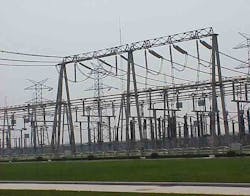Today's electric grid is vulnerable, as seen recently on the east coast. Some residents in New York and New Jersey are getting power back this weekend while Con Edison estimated some in the region may not receive it for two weeks.
So, how do we avoid this problem in the future? Some say investment in building out a smart grid network so sensors and other digital devices can identify when power has been lost in networks is a start. Our current grid is a semi-automated system and still relies on manual alerts of power outages via phone calls to utility companies. Yikes.
Secondly, you remove multiple “single points of failure" in a centralized system architecture and create a decentralized network (smart grid), which taps alternative sources of energy and can offer some self-healing properties to deliver power in a major crisis. Also, proven commercial energy storage has to become a reality and more investment is needed there....but that's another discussion.
What About Now?
However, adding sensors and digital devices is paying off right now in commercial applications. Last year, AW reported on SuperValu and its participation in a emergency energy curtailment program. The company is accomplishing a reduction in its consumption of energy—and selling it back to the utilities also—by way of Opto 22's OptoEMU sensor (www.opto22.com) and Net Peak Energy Group, LLC (www.netpeakenergy.com), an energy data aggregator and curtailment services provider.
Click here to read the case study and, below, is a quote from the story on how effective energy managment for commercial applications can produce opportunities.
“During periods such as this, the payments received for curtailment essentially amount to ‘selling’ electricity back to the power grid operator. If, for example, we have a customer that pays $50 per megawatt hour for its electricity, and the market price rises to two, three, or even four hundred dollars a megawatt hour, the business would want
to capitalize on a price that high. By monitoring real-time market prices—and working within the pre-arranged dispatch rules and strike prices established in conjunction
with the company’s engineers and operators—we’re able to generate revenue for the customer.”
About the Author
Grant Gerke
Digital Managing Editor

Leaders relevant to this article:
